Considered Iceland’s “capital of the north,” Akureyri sits idyllically between quick-sloping mountains and the calm Eyjafjörður fjord. Here’s how to make the most of a couple of days there.
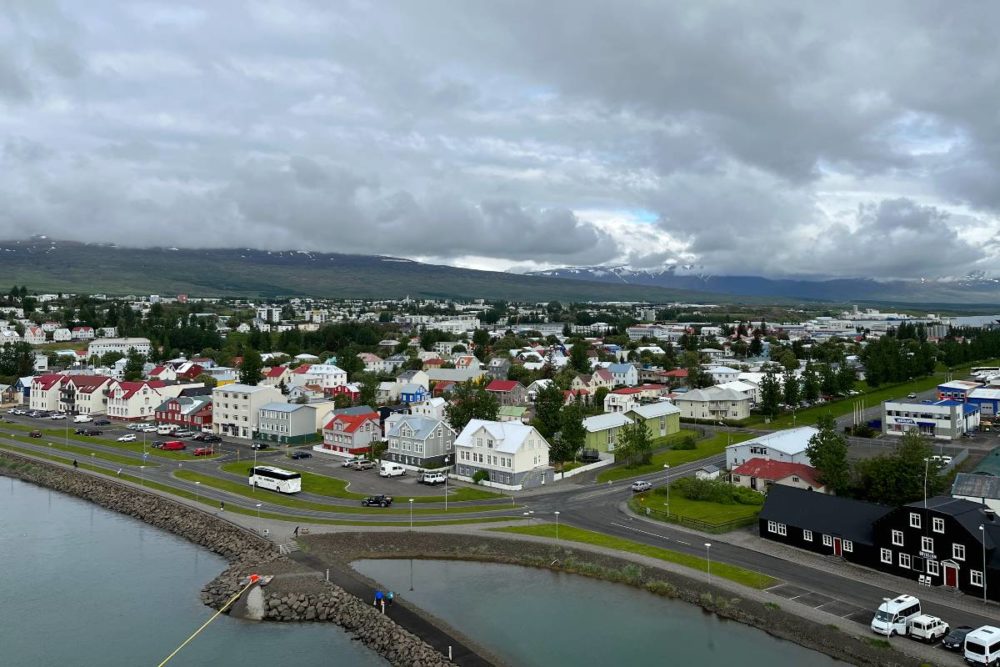
Akureyri: Iceland’s capital of the north (Photo: Michael C. Upton for TravelMag)
Fleeing the powerful political forces of Norwegian King Harald Fairhair, a young Helgi the Lean (Eyvindarson) set out for Iceland, a place of fertile land, bountiful seas, and freedom. Around 890 AD, Helgi the Lean took possession of the land around Eyjafjörður and made a home in Kristnes, south of modern day Akureyri, which is the largest town outside the island’s more populated southwest corner.
Over the early years of habitation in the north, Akureyri was used as a trading spot and seasonal fishing village. By 1778 it had become a permanent settlement, with a population of 12. The relatively mild climate created by the unique geography, 62 miles south of the Arctic Circle, made Akureyri an important agricultural sector. Today though, it is a popular starting point for visitors who seek a greater experience of Iceland’s culture and natural beauty.
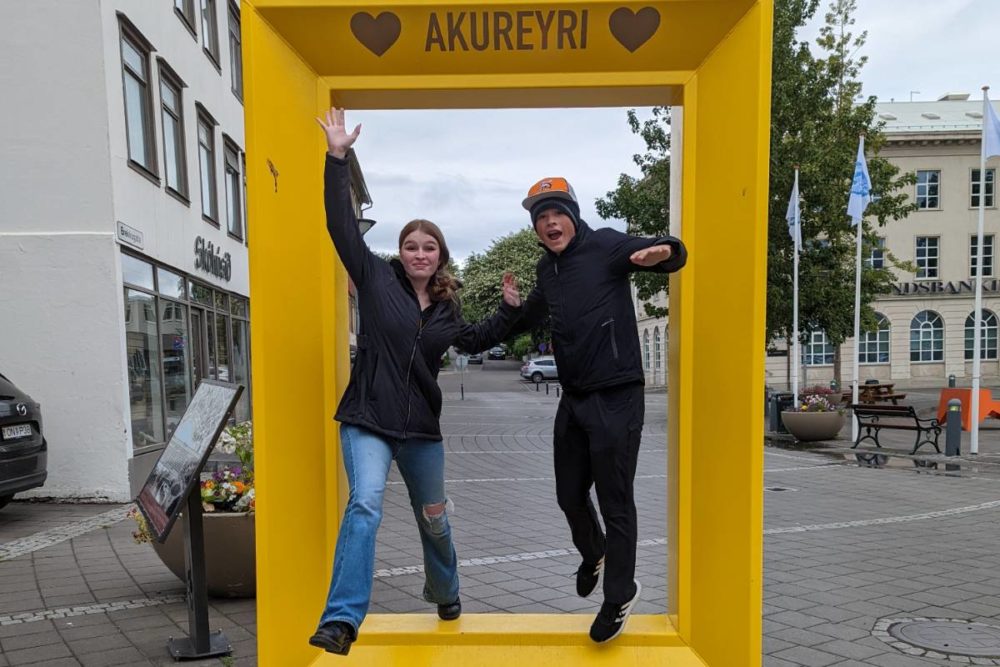
Akureyri is jumping off point for northern Iceland (Photo: Michael C. Upton for TravelMag)
The growth of tourism in Iceland has seen 20 percent of the Akureyri workforce shift toward the service industry. Most of the restaurants, shops, and hotels are found downtown, especially along Hafnarstræti, and the red stop lights are crafted into hearts, after city leaders decided the world needed a little more love.
Culture
Art is an important part of Icelandic culture, and the residents of the north take special pride in the presentation and preservation of artistic works. Akureyri has developed an art trail featuring 35 different stops in 6 zones throughout the city and its outskirts. The trail features open-air works by artists including Ásmundur Sveinsson, Einar Jónsson, and Elísabet Sigríður Geirmundsdóttir.
Art can also be found inside at the Akureyri Art Museum (Kaupvangsstræti 8-12), which serves as the creative wing of the local Vocational School. Located on what has been named Art Street because of its wealth of galleries and artisan shops, the museum features rotating exhibits by established artists, student displays, and by community workshops and classes.
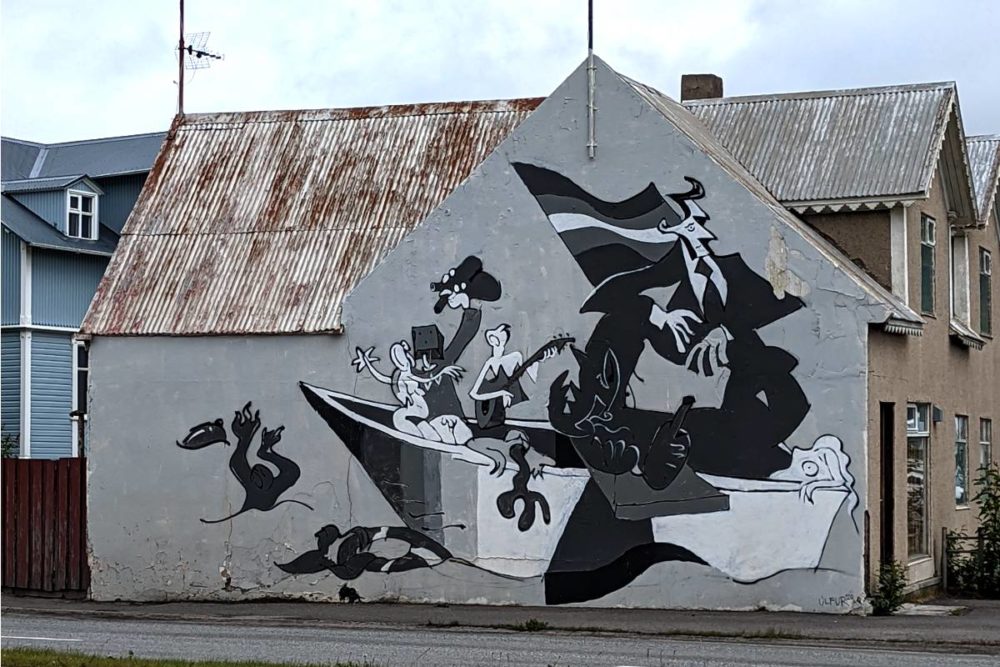
Murals are part of a healthy local art scene (Photo: Michael C. Upton for TravelMag)
History-minded travelers may enjoy the Akureyri Museum (Aðalstræti 58) and their two permanent exhibits “Eyjafjörður from Early Times” and “Akureyri–the Town on the Bay.” All text is available in English, German, and Danish.
On top of the hill overlooking Eyjafjörður sits the Akureyri Botanical Garden (public parking off Eyrarlandsvegur) which, after a series of expansions, now occupies over 9 acres. The garden, other than being a beautiful sight, is an active experiment, studying plant life in the northern Icelandic climate. The space is used for public events and entertainment, and is also home to Kaffi LYST coffee shop.
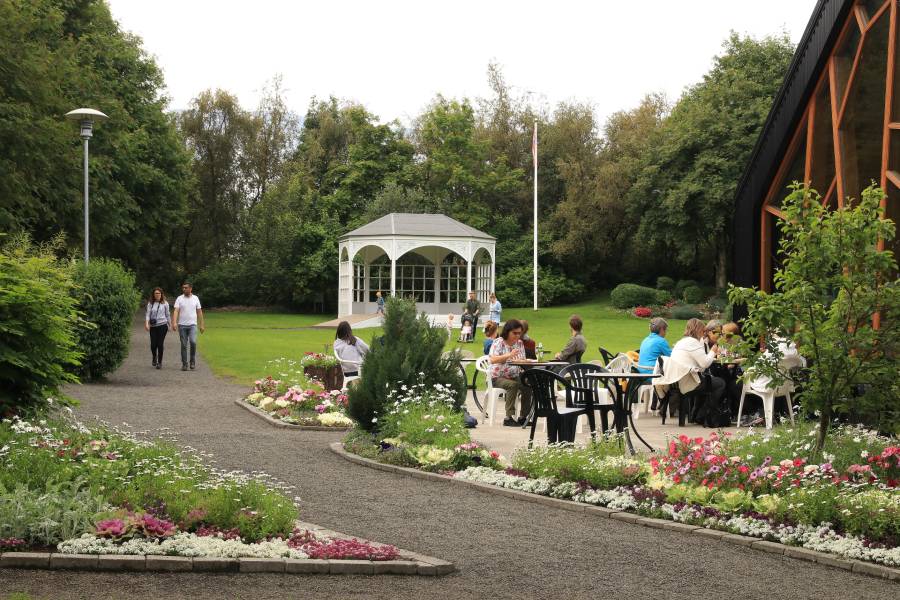
Akureyri Botanical Garden (Photo: courtesy María H. Tryggvadóttir)
Where to Stay
Located on the quiet side of Akureyri, but within easy walking distance of downtown, Hotel Akureyri (Hafnarstræti 67) is comprised of two main buildings offering amazing views of Eyjafjörður. The first building, Dynheimar, was Iceland’s first movie theater. Right down the street, the Skjaldborg building, built in 1924, originally served as a printing house. The attached urban farm runs on repurposed oxygen and water from the hotel and provides fresh greens for hotel guests and locals; it is also the perfect spot to pick up some skyr and snacks before heading out for a nearby adventure.
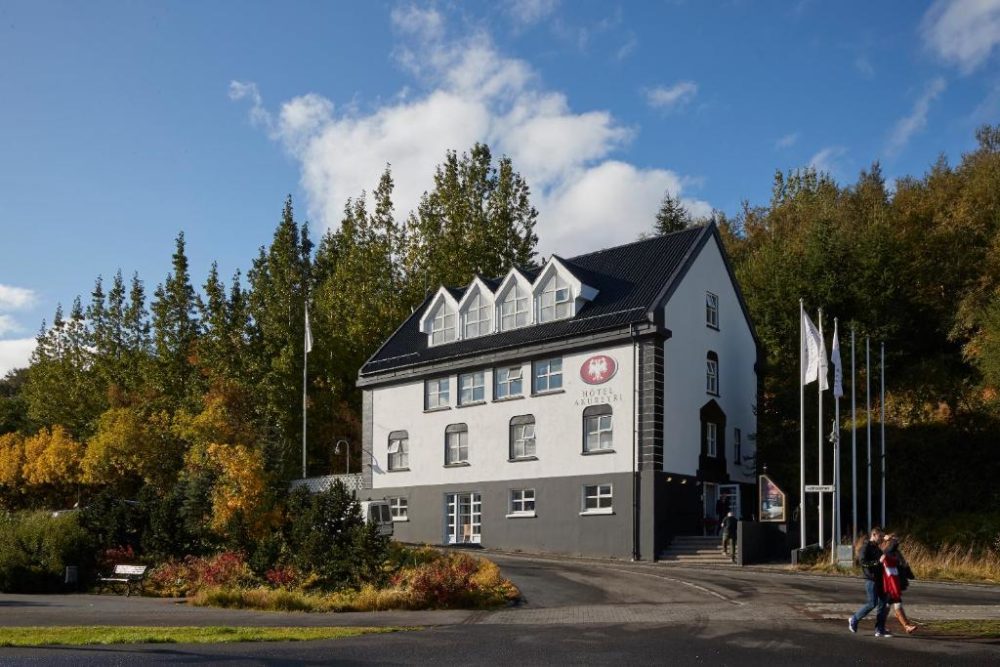
Hotel Akureyri (Photo: Booking.com)
Centrally located Hótel Kea (Hafnarstræti 89) sits neatly at the bottom of the steps to Akureyrarkirkja Lutheran Church and the hotel’s lower levels contain shops and eateries. Hótel Kea offers 104 neatly decorated rooms ranging from single occupancy to family rooms and suites.
Iceland is known for its quality hostels, and this city has several options for affordable overnight stays. North Iceland hikers can find like-minded folks at Akureyri Backpackers (Hafnarstræti 98). Hafnarstræti Hostel (Hafnarstræti 99-101) is a space-age capsule berthing. Pods come in one- or two-person sizes and feature televisions and safes.
Eat & Drink
Travelers anywhere in Iceland will be hard-pressed to find a location without great food, and Akureyri’s restaurants range from food trucks to fine dining. Northern Iceland is home to plokkfiskur, a fish “stew,” and Hákarl, fermented Greenland shark, and the gourmands of the north can elevate even the simplest ingredients into a culinary wonder.

Plokkfiskur is a traditional Icelandic dish (Photo: Michael C. Upton for TravelMag)
One of Akureyri’s newest restaurants is North (Hafnarstræti 67). Located within Hotel Akureyri, North is the home of Chef Gunnar Karl Gíslason who offers a 7-course tasting menu with an emphasis on Icelandic and Nordic ingredients. Gíslason was the first Icelandic chef to earn a Michelin star.
The most recognizable restaurant in Akureyri is Bautinn (Hafnarstræti 92) and it is located in one of the city’s oldest buildings (built 1902) on the corner of Hafnarstræti and Kaupvangsstræti. This comfortable and affordable restaurant serves pub- and bar-style food from around the world with a variety of burgers and extravagant desserts. Burger fans can also grab a quick bite at Hamburgarfabriken (Hafnarstræti 89), which offers 16 versions of the American classic.
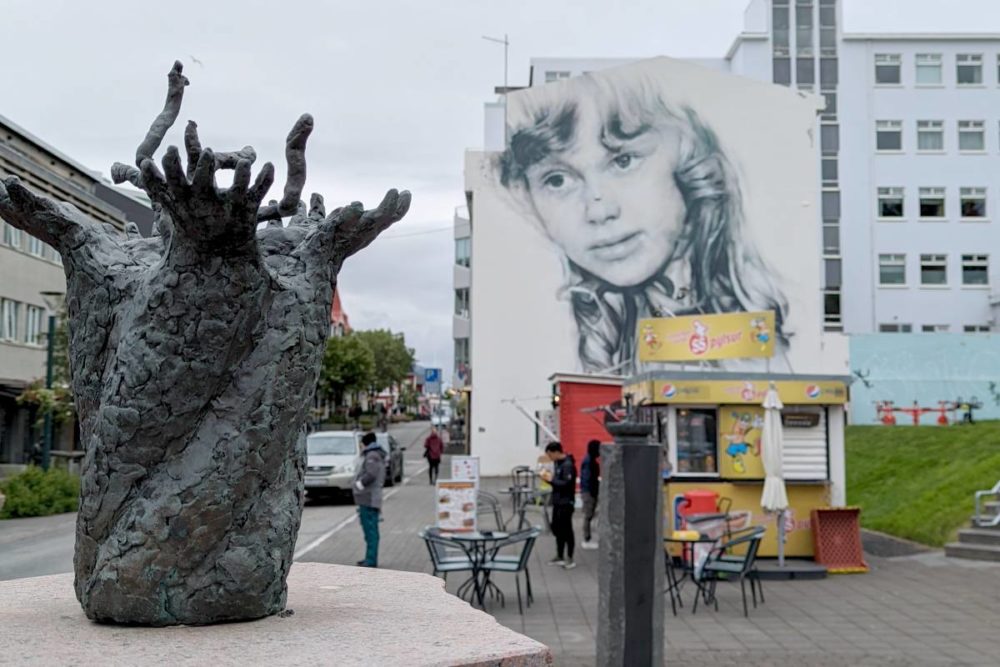
Art and fast-food meet downtown (Photo: Michael C. Upton for TravelMag)
A favorite spot for locals is Kristjáns’ Bakery (Hafnarstræti 108), located in bustling downtown Akureyri and offering a wide variety of breads and treats. Bread production takes place at the nearby Hrísalund location, and the products are always fresh. For those who cannot get enough of Iceland’s famous hot dogs, there is also a permanent Pylsuvagninn cart in the open space along Hafnarstræti across from The Viking gift shop.
Akureyri is Iceland’s unofficial brewing capital, home to both Viking Brewery and Einstök Ölgerð (Icelandic for “unique brewery”), two of the most internationally recognizable Icelandic brands. Outside the brewery stands an oversized, gold Viking beer can, a perfect spot for Instagram photos. The Einstök Brewer’s Lounge (Kaupvangsstræti 23) is downtown on the upper floor of Ölstofa Akureyrar, a small pub who pride themselves on offering a great selection of local beers.
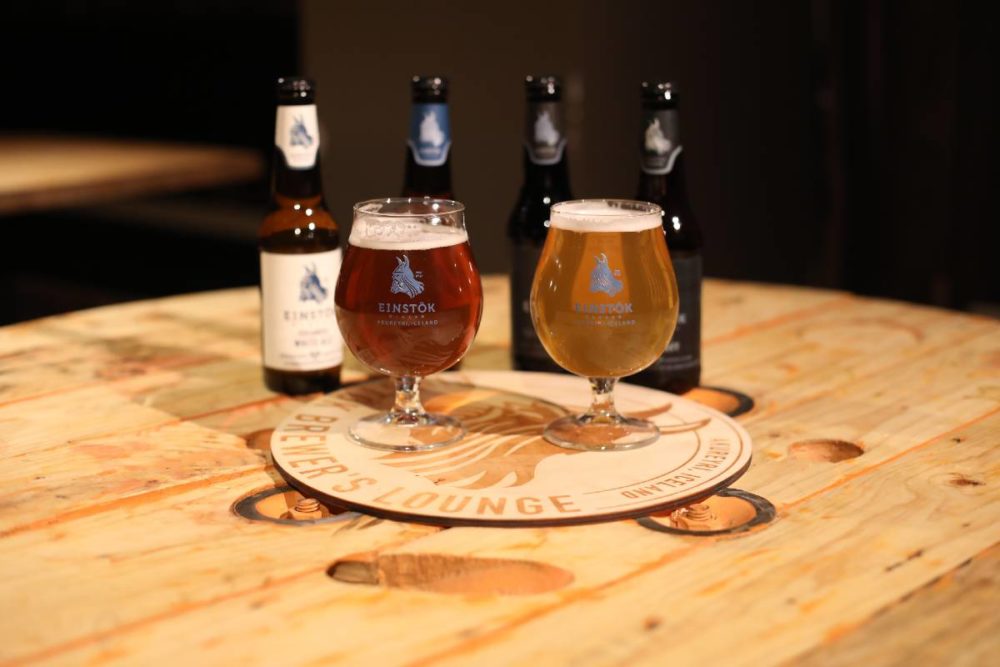
Beer is fresh in Akureyri (Photo: courtesy Einstök Brewer’s Lounge)
Great cocktails can be found at Bryggjan (Strandgata 49), located just a short walk away from downtown, near the Akureyri Harbor Cruise Terminal. Eyja (Hafnarstræti 90) is a wine bar and bistro. This is a great place to sample Brennivín; uniquely flavored with caraway, it is the unofficial spirit of Iceland.
Shopping
Being the largest city in northern Iceland, Akureyri has some of the same amenities and conveniences of the capital, Reykjavik. Icewear Akureyri (Hafnarstræti 106) provides locals and tourists with clothing and cold weather accessories. Most of the books at Penninn Eymundsson bookstore (Hafnarstræti 91) are in Icelandic, but there are plenty of souvenirs here and in The Viking gift shop (Hafnarstræti 106). Hafnarstræti is lined with and surrounded by shops offering high quality fashion and home décor.
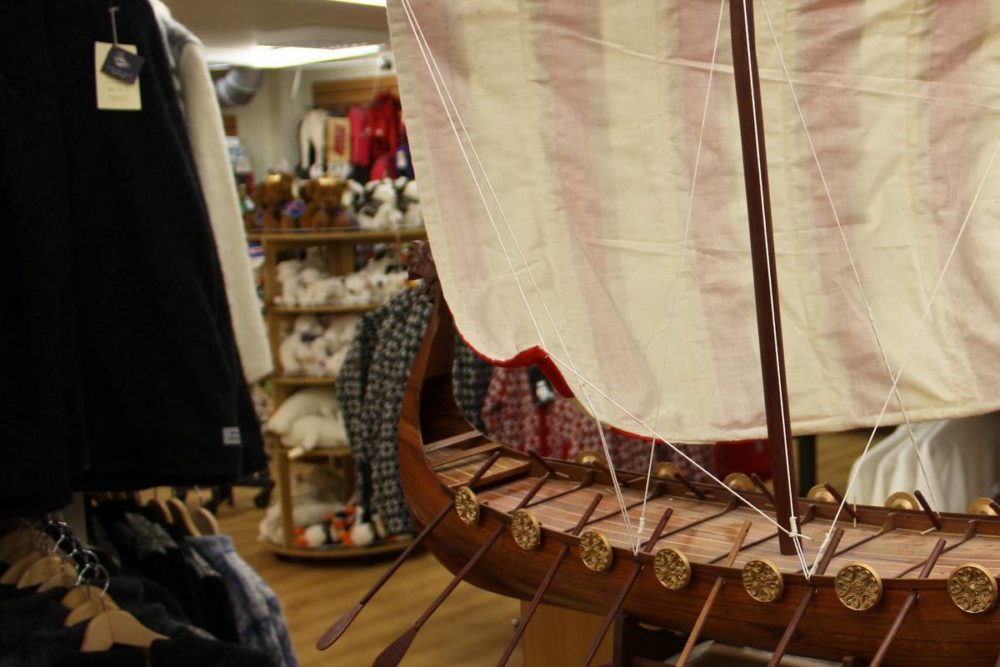
Gifts and necessities are available downtown (Photo: Shadowgate via Flickr / CC BY 2.0)
Quick day trips
Akureyri is a great starting point for adventures on the newly dubbed Diamond Circle. Spinning off the popularity of the Golden Circle in the south, the Diamond Circle loops through 160 miles in northern Iceland and can be completed in a day. The Diamond Circle hits the natural and historic wonders Lake Mývatn, Ásbyrgi Canyon, and the Dettifoss and Goðafoss waterfalls.
The naming of Goðafoss waterfall is an amazing tale of Icelandic culture and history. In brief, goði Þorgeir Ljósvetningagoði made Christianity the official religion of Iceland around 1000 AD, and tossed his pagan idols into the waterfall. Goðafoss—the waterfall of the gods—is only a half an hour’s drive from downtown Akureyri.
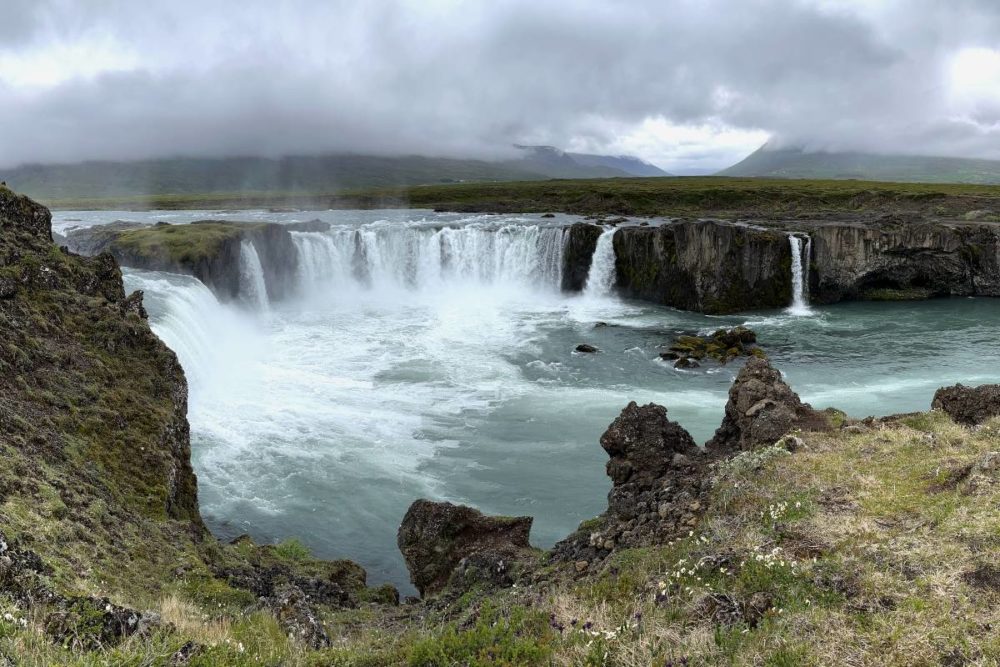
Overcast skies over beautiful Goðafoss waterfall (Photo: Michael C. Upton for TravelMag)
Lake Mývatn is the fourth largest body of water in Iceland and the area is teaming with flora and fauna. The site is rich in Icelandic history and lore and the nearby Dimmuborgir, aka Dark Fortress, is a top site for travelers.
A quick half-hour’s drive to the other side of the fjord from downtown Akureyri stands the Laufás Museum and heritage site (610 Grýtubakkahreppur). The living history farmstead was founded by the area’s earliest inhabitants and the house is a maze-like collection of interconnected rooms built over many years. Also outside of town, the Collection of Miniatures (Sólgarði Eyjafjarðarsveit, 605 Akureyri) is a display of objects (unconventional or otherwise) found by builder Sverris Hermannsson.
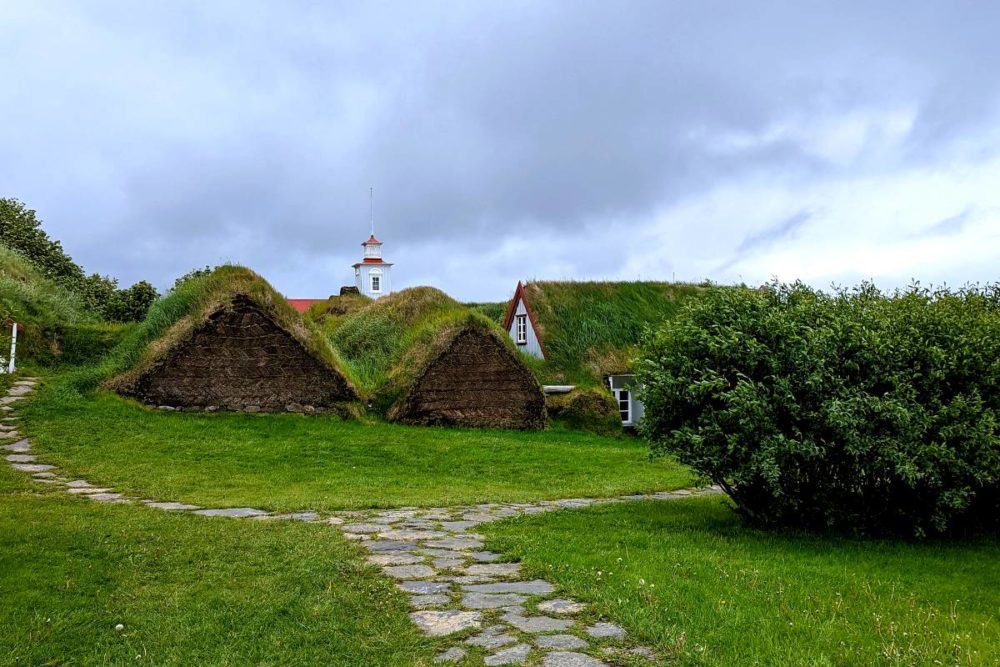
Grassed over roofs at Laufás Museum and heritage site (Photo: Michael C. Upton for TravelMag)